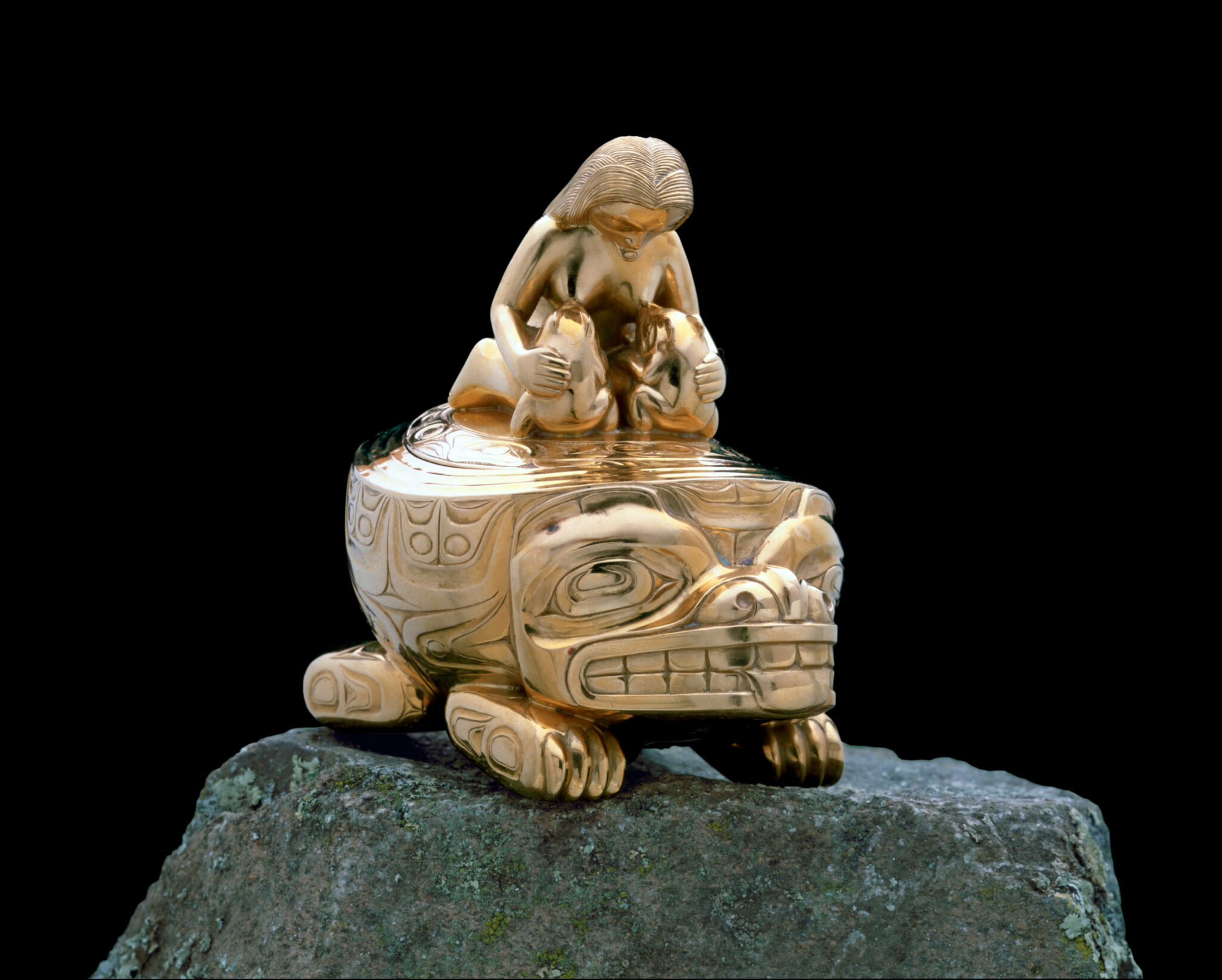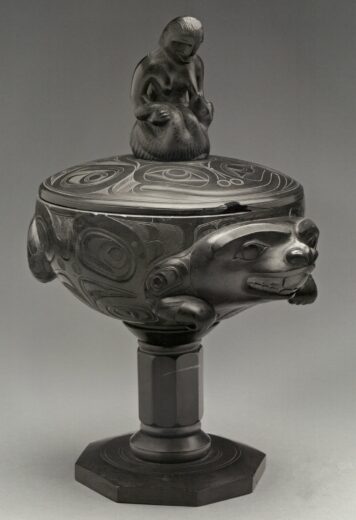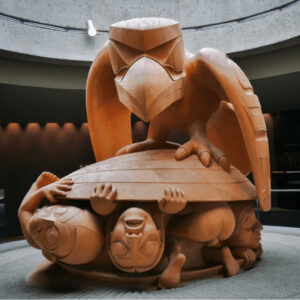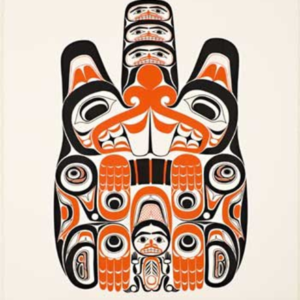Haida Myth of Bear Mother Dish 1972

Bill Reid, Haida Myth of Bear Mother Dish, 1972
22k gold, 7.3 x 5.2 x 7 cm
Canadian Museum of History, Gatineau
Bill Reid’s stylistic voice is clearly expressed in the Haida Myth of Bear Mother Dish, which is both functional and pictorial. On the top of the dish, Bear Mother, whose socially elevated yet gendered status is indicated by the labret (lip pendant) in her lower lip, warmly caresses her cubs as she breast-feeds them. Assuming a supportive yet heavy presence at the base of the dish is her husband, the Bear Father. Reid is combining techniques, employing the lost-wax casting process for the figures above and protruding elements below, while relying on forming and engraving methods for the central dish and lid.

The Bear Mother story is set in a mythic time when bears and humans lived alongside each other with respectful tolerance. A young woman slips and falls when she accidentally steps in a pile of bear excrement. When she vocalizes her anger with the bears in derogatory and unflattering terms, the bears take her captive and place her in a dark cave for several days. She receives counsel from the Mouse Woman (Quaganjaat), another Haida character, who advises her to place copper, a symbol of wealth and prestige, atop her next excrement. In doing this, she persuades the bears that she has exceptional powers. A bond develops between the woman and the Grizzly Chief’s nephew. They eventually marry and she gives birth to two cubs. Her brothers from the human village find her and her bear family, and in order to save them her husband sacrifices himself. Bear Mother’s story is captivating because she demonstrates her ability to adapt, grapple with the tensions between two worlds, and remain a powerful conduit for life— qualities akin to those Reid himself displayed.
On the lid we can see Reid developing an emotive, stylized, realism-in-the-round technique, where tenderness is displayed by the Bear Mother, who is in human form suckling her cubs. The dish itself remains more traditional in its bas-relief formline treatment, its bulging form evoking a bentwood bowl. It alludes to Reid’s great admiration for Daxhiigang (Charles Edenshaw, 1839–1920) and the imaginative and innovative ways Daxhiigang combined traditional and emotive approaches in his work.
Daxhiigang’s nineteenth-century argillite Compote reveals an interesting lineage for the Haida Myth of Bear Mother Dish. Atop the lid we see a naturalized, in-the-round Bear Mother suckling one cub. Below, the Bear Father’s body and back provide the container and lid. The stem and base testify to Daxhiigang having been inspired by imported goods, meshing a traditional Haida bowl with a European tableware form. Carved in fragile argillite and showing a chipped edge, the compote is of questionable functionality.
Reid’s Haida Myth of Bear Mother Dish is a golden hand-held nugget. While paying homage to Daxhiigang, the work also honours the Bear Mother herself. After all, as Reid expressed when describing her presence in Cedar Screen, 1968, the Bear Mother is “where it all starts. [She is my] last West Coast love.”

 About the Author
About the Author
 More Online Art Books
More Online Art Books
 Acknowledgements
Acknowledgements